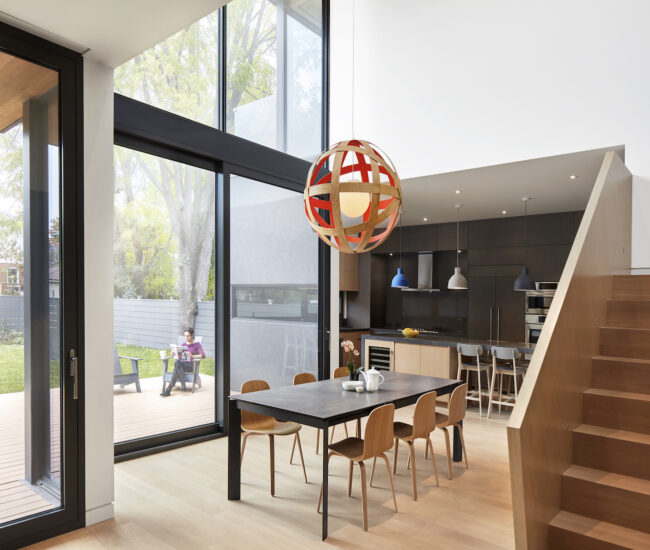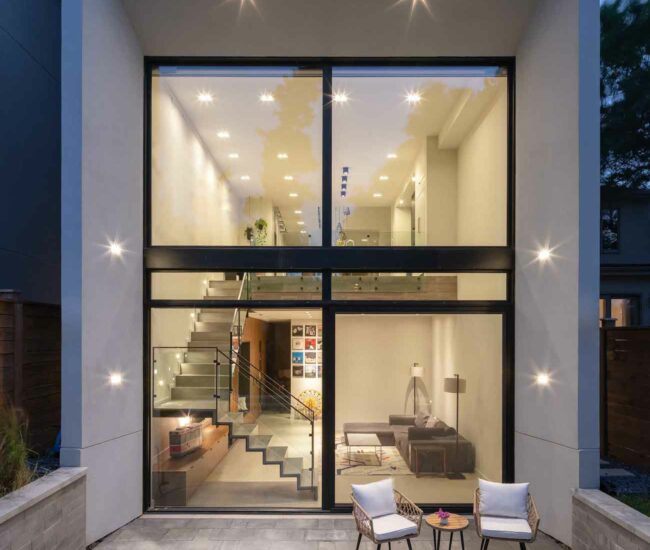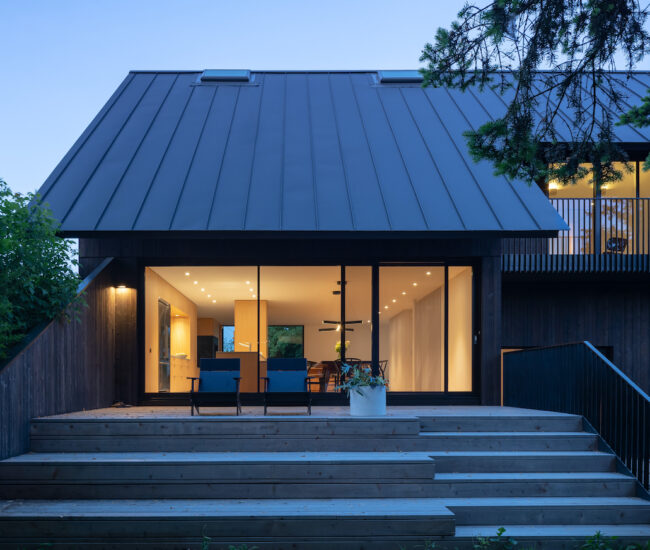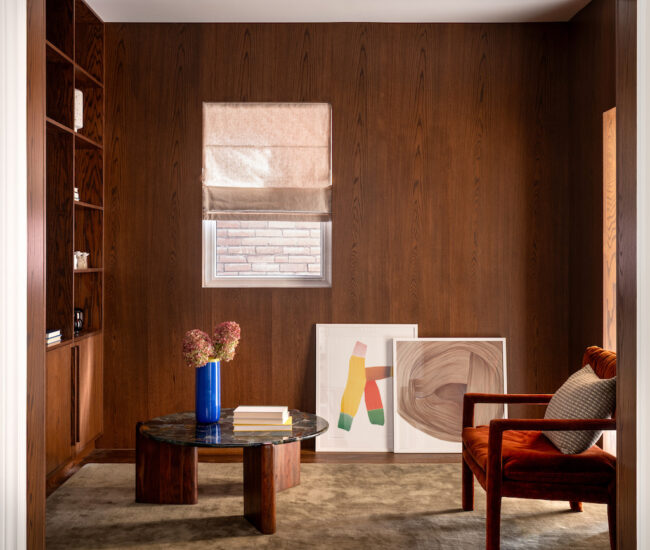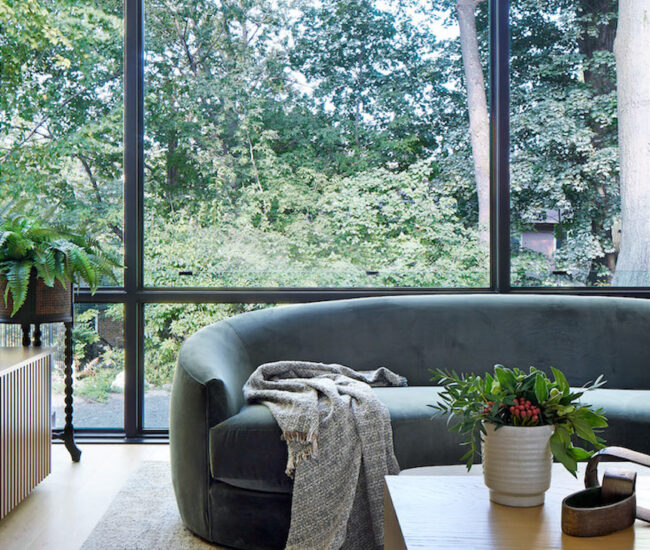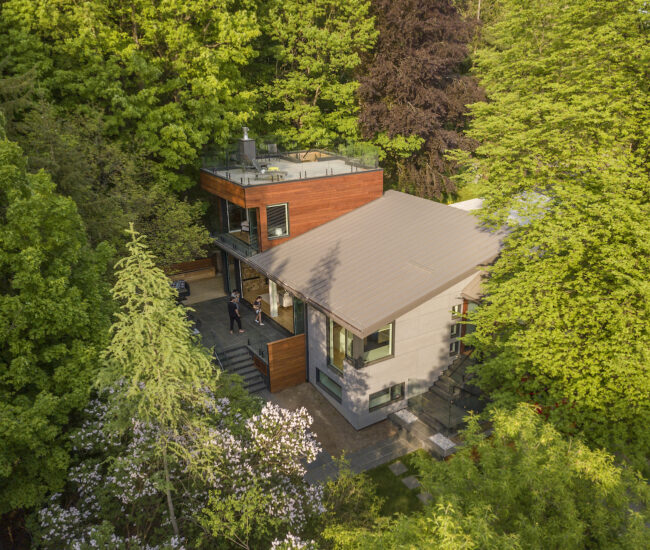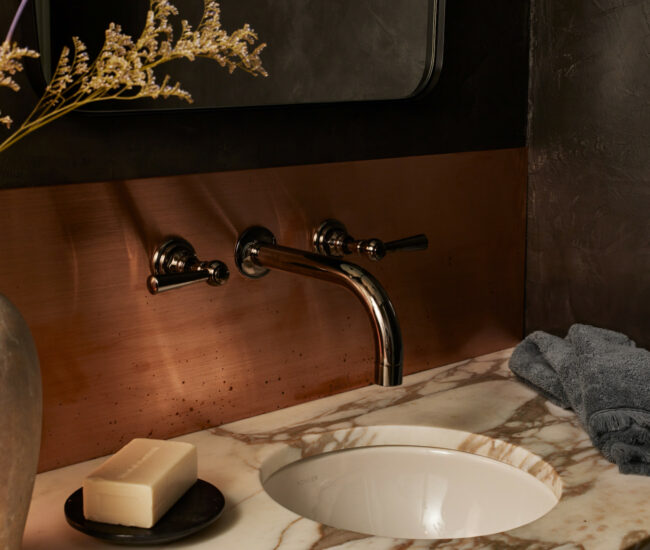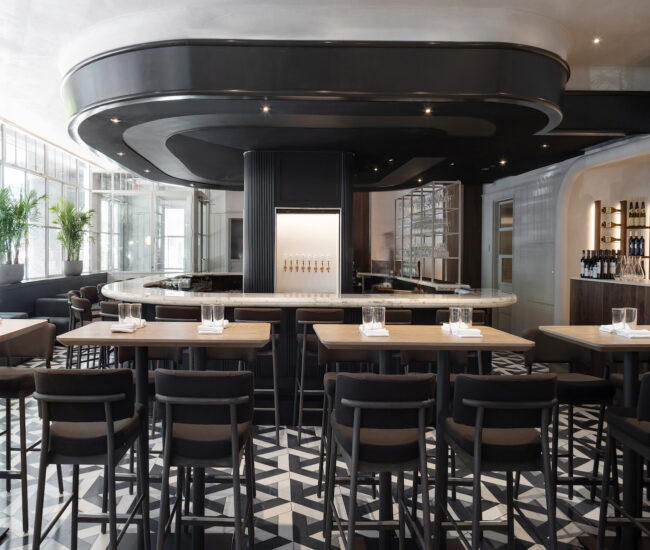A Harbord Village Laneway Home Celebrating Down To Earth Design
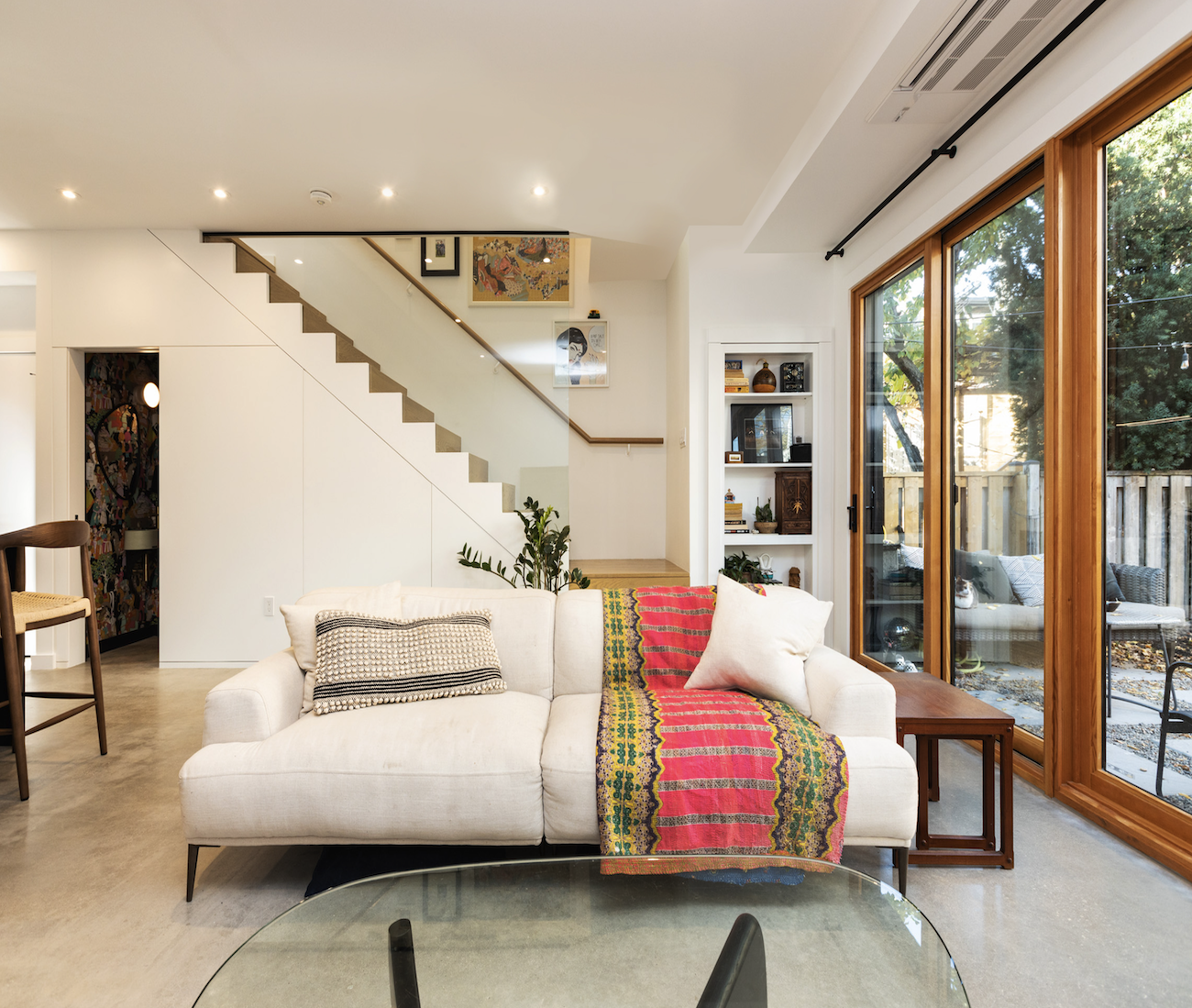
Including a green roof terrace and minimalist, Japandi-inspired interiors
Toronto architecture and construction practice Lanescape works predominantly in – you guessed it – laneway housing. Its mission is to create unique secondary homes that have a positive impact on the urban context of the city without sacrificing high-quality living environments both inside and out. “We started Lanescape before there was laneway housing policy in Toronto, and established the practice in 2014 as a way to advocate for that policy,” says co-founder Craig Race. Nearly ten years later, laneway housing is one of the most significant, and visible, changes in Toronto’s housing landscape. In Harbord Village, it was the obvious choice for a long-time homeowner, who envisioned a secondary dwelling that could provide a compact and efficient space to serve as their new home on Hallam Street, while using their existing residence to provide supplemental rental income. They enlisted the Lanescape team to make it happen.

In the Hallam Laneway’s interior, a spacious, open floor plan provides unobstructed sightlines to every corner. Storage space is maximized and concealed to avoid clutter, with rooms concealed beneath the stairs and behind a bookshelf door. A bright waterfall staircase was designed to be multi-functional for the homeowner who is a seamstress by trade; the bottom steps spill out and become a space to sit or display their collection of art, greenery and textiles.

Working with merely 1,230 square feet, Lanescape was careful to determine the home’s blueprint, augmenting as much living space to a kitchen-dining area, living room, and powder room on the main floor. Attending to the client’s love for Japandi style, warm woods and natural stone are used as touchstones throughout the otherwise very minimalist interior scheme.

Custom inbound shelving by Superior Ideas Ltd. adds a personalized touch to the kitchen without sacrificing precious floor space. In its down-to-earth appeal, the Hallam laneway delivers on space saving and its ecological footprint without sacrificing any of the necessities or pleasures that come with modern living. “It was important to the client that they didn’t sacrifice much of what they already had in the main house, says architect and project manager Matt Hagen. “If anything, they wanted an upgrade.”

The home’s upper level is designed to be a spacious, flexible layout with a principal bedroom and secondary guest space sharing a well-appointed common bath. In line with the interior’s au natural sensibility, views here overlook the home’s green roof and garner tons of natural light.

“Working within the tight confines of a backyard, creating privacy and considered views were of utmost importance. To do so, the second floor is stepped back to create a green roof, which also serves as a way to avoid providing an angular roofline – a condition that is required for all as-of-right laneway suites in Toronto which sit close to the main home,” says Race.

In its final state, the Hallam laneway combines functional design with an honest and artistic sensibility expressed through subtle detailing at both the interior and exterior of the home. Ultimately, this unit is an example of how laneway homes can be an opportunity for personalized urban living in the heart of an established residential neighbourhood. LANESCAPE.CA

